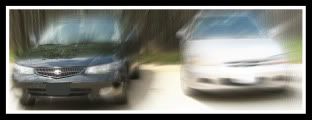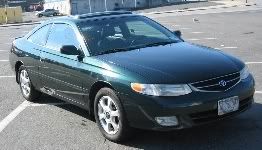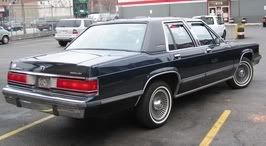Jakecallun20 wrote:Yeah the state inspection. I am 7 months overdue

But this light has been on for a while, and it did pass last time, I'd think it would pass again (I hope)
Good luck this is what I got off the official texas transportation site. Looks like they are a bit nicer than NY. Here the inspection places send the info to the capitol at the time of inspection and if the light is on instant FAIL.

What systems are checked during the OBDII test?
The On-Board Diagnostics (OBDII) emissions test for 1996 & newer vehicles consists of the following:
Check 1
Malfunction Indicator Lamp (MIL) or Service Engine Soon Light, Check Engine Light, Check Engine Symbol check
This is considered the bulb check portion of the test. The light must come on when the ignition is turned to the ON position and the light must go OFF when the engine is started. The inspector answers these two bulb check questions as either a PASS or FAIL. If the light is not working, the vehicle will FAIL the test, because the purpose of the light is to alert the driver of the vehicle that there is a problem with the OBDII system (exceeding emissions) and the vehicle needs to be diagnosed and repaired.
Check 2
MIL Command Status and Diagnostic Trouble Codes (DTC's) check
If the MIL command status is ON, then the vehicle's Powertrain Control Module (PCM) is commanding the MIL to turn ON, because a problem has been detected within the OBDII system and a DTC has been set.
For example, an engine misfire DTC - PO301. If the MIL command status is ON with a DTC set, the vehicle will fail. If the OBDII system is operating properly, the MIL command status will be OFF.
Check 3
OBDII (Non -Continuous) Readiness Monitors check
These monitors are like self checks of each emissions component (EGR, O2 sensor, etc) within the OBDII system. These non-continuous monitors are considered Ready until either DTC's have been cleared with a scan tool or if battery power has been disconnected, then the monitors will reset back to Not Ready.
In order to get the monitors set back to Ready, the vehicle must be driven through a drive cycle, which is a combination of city/highway driving for a set period of time. This drive cycle relearns the OBDII system and rechecks all of the emissions component's individual systems. As each system completes its own self test, the monitor will set back to Ready.
If a problem still exists in any of the individual systems, a DTC will set again once the monitor changes to Ready. If a vehicle has a MIL ON with a DTC set and the owner disconnects the battery to clear the light to try to pass the test, all the non-continuous monitors reset back to Not Ready and the vehicle now fails for Not Ready.
We allow two (2) non-continuous monitors to be Not Ready and still pass the test, but three (3) or more Not Ready's will cause the vehicle to fail.
There are three (3) continuous monitors that are always Ready: Misfire, Fuel System, and Comprehensive Components. If you look at your Vehicle Inspection Report (VIR), you will see the emissions monitors listed and their Ready/Not Ready status. If any of the non-continuous monitors say N/A (Not Available) or N/S (Not Supported), then there is no monitor for that system.
This information is illustrated in a "Ready or Not" poster displayed in all of the emissions testing stations as well as the Recognized Emissions Repair Facilities (RERF's).
Here is your inspection list
1. Horn
2. Windshield Wipers
3. Mirror
4. Steering
5. Seat Belts
6. Brakes (system) (Parking - beginning with 1960 models)
7. Tires
8. Wheel Assembly
9. Exhaust System
10. Exhaust Emission System (beginning with 1968 models)
11. Beam Indicator (beginning with 1948 models)
12. Tail Lamps (2); (1) if 1959 model or earlier
13. Stop Lamps (2); (1) if 1959 model or earlier
14. License Plate Lamp (1)
15. Rear Red Reflectors (2)
16. Turn Signal Lamps (beginning with 1960 models)
17. Head Lamps (2)
18. Motor, Serial, or Vehicle Identification Number
19. 1988 & newer - inspect for window tinting or coating
20. Gas caps on vehicles 2-24 model years old.










